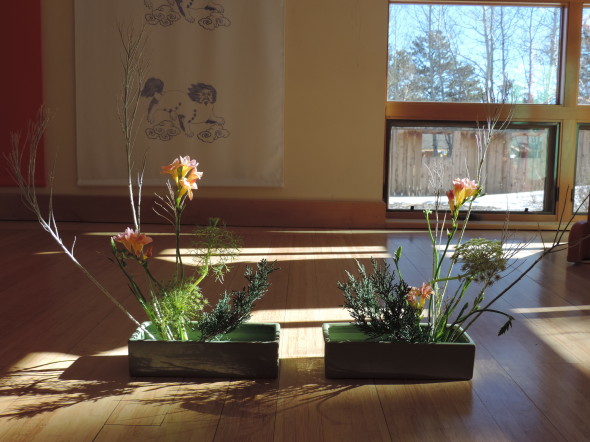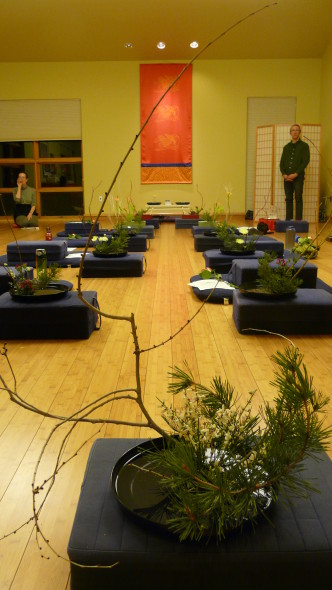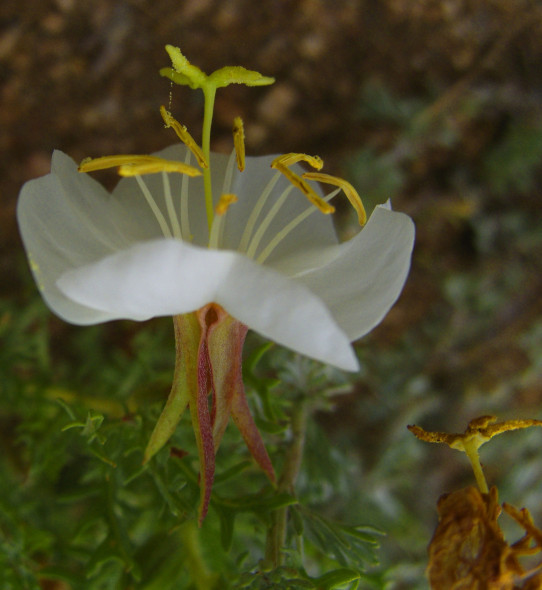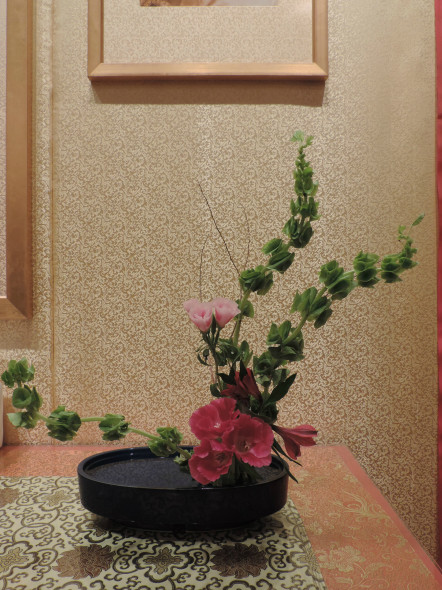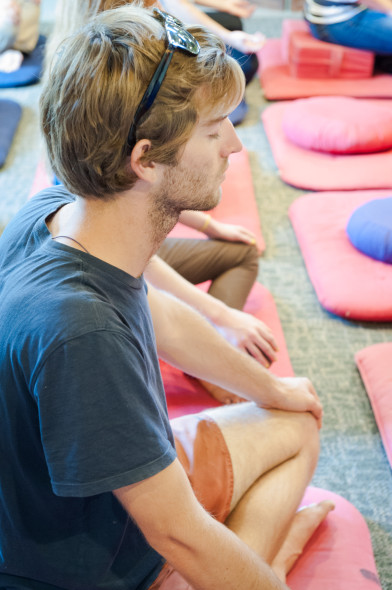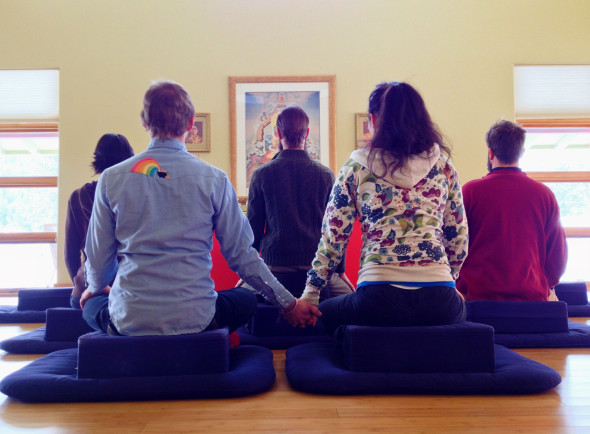by Larry Welsh
A personal message:
I would like to invite you to join us at Shambhala Mountain Center for a special retreat, starting the evening of April 25 until 2 pm on April 27. We live in a time when many people are lost in the pursuit of happiness purely through ideas, thoughts, and screens… like a dream. Materialism rages in the ten directions and thus many resort to violence, thinking this to be a solution to their pain and suffering. That violence can manifest in very subtle ways and in coarse ways causing harm to self and others. The all-consuming drive to be productive at the expense of nourishing our deepest nature robs us of real fulfillment and true maturity. Our spirit drifts, leaving us without a place to truly rest and our hearts have lost the understanding, the Tao of The Art of the Heart. By learning how to flow like water and to be strong as a mountain through authentic relaxation, each of us can discover the Art of the Heart and thus know how to nourish the chi without harm.
As the sages saw clearly, knowing when to seize the right moment is right timing,
Larry Welsh
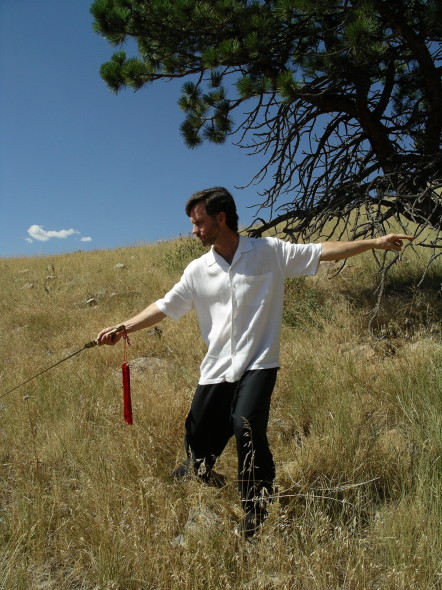 To recover intrinsic health and well being in each moment of our day, we need powerful medicine—the medicine of movement and stillness. The wisdom traditions of T’ai Chi Ch’uan, the Buddhist teachings of the Four Foundations of Mindfulness and the 5 Elements from Chinese cosmology offer profound insight into movement, stillness, and health. These traditions of practice allow each of us to contact a wellspring of sanity and health in the midst of chaos, upheaval, and stress. They can teach us how to work compassionately with body, perception, emotions, thoughts, and others. By understanding the five elements and the five seasons, we open ourselves to the unique power of each season: manifesting as courage through stillness; creativity through pushing upward; joy through maturity; decrease through harvest; and balance through equanimity. The correspondences may seem strange at first, but they are real and true.
To recover intrinsic health and well being in each moment of our day, we need powerful medicine—the medicine of movement and stillness. The wisdom traditions of T’ai Chi Ch’uan, the Buddhist teachings of the Four Foundations of Mindfulness and the 5 Elements from Chinese cosmology offer profound insight into movement, stillness, and health. These traditions of practice allow each of us to contact a wellspring of sanity and health in the midst of chaos, upheaval, and stress. They can teach us how to work compassionately with body, perception, emotions, thoughts, and others. By understanding the five elements and the five seasons, we open ourselves to the unique power of each season: manifesting as courage through stillness; creativity through pushing upward; joy through maturity; decrease through harvest; and balance through equanimity. The correspondences may seem strange at first, but they are real and true.
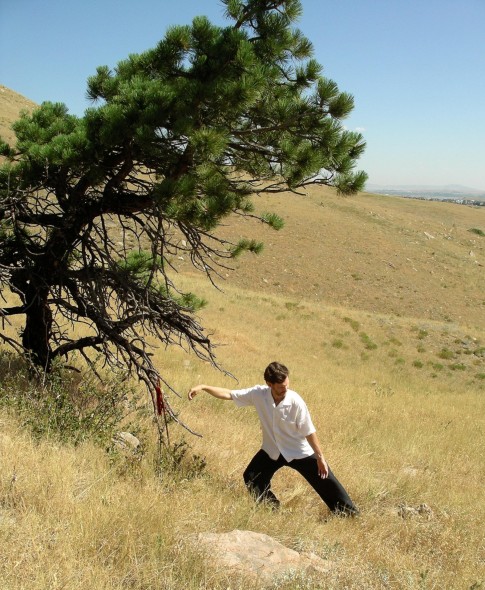 These practices are beyond philosophy and completely up-to-date. They are pure and useful teachings that each one of us can embrace and integrate into our daily lives. They are based upon the simple truth of heaven, earth, and human being—what is actually here and now rather than basing our life upon a dream or fantasy alone. During this retreat, we will explore the experience of heaven and virtue, earth and breaths, discovering how to cultivate our flood like chi. We will practice and learn about the lion’s roar of fearlessness through the Four Foundations of Mindfulness. And we will learn how to embody the 5 Elements in order to harmonize life inside and out through the five seasonal movements.
These practices are beyond philosophy and completely up-to-date. They are pure and useful teachings that each one of us can embrace and integrate into our daily lives. They are based upon the simple truth of heaven, earth, and human being—what is actually here and now rather than basing our life upon a dream or fantasy alone. During this retreat, we will explore the experience of heaven and virtue, earth and breaths, discovering how to cultivate our flood like chi. We will practice and learn about the lion’s roar of fearlessness through the Four Foundations of Mindfulness. And we will learn how to embody the 5 Elements in order to harmonize life inside and out through the five seasonal movements.
These timeless practices are based upon clear insight into finding one’s way, one’s true nature. By restoring one’s unity with heaven and earth, synchronizing body and mind, one can finally return home by understanding through actual experience how to transform life’s challenges into peace and personal empowerment. The key is to learn how to shift gears from reacting to responding to the myriad fluctuations of life from one’s center.
This retreat is open to all ages, beginners and advanced students. We hope to see you there.








